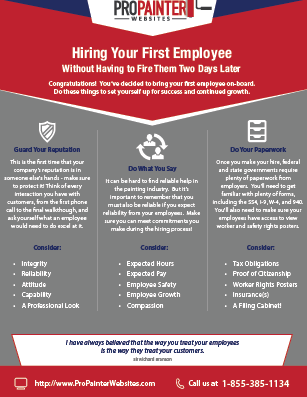Discover Just How Seasonal Influences Can Influence The Performance Of Industrial Outside Painting And Find Out The Most Favorable Times To Guarantee Resilient Outcomes For Your Job
Discover Just How Seasonal Influences Can Influence The Performance Of Industrial Outside Painting And Find Out The Most Favorable Times To Guarantee Resilient Outcomes For Your Job
Blog Article
Material Writer-Burnham Decker
When you're preparing an industrial exterior painting job, seasonal variables can make or damage your results. You'll wish to consider exactly how temperature and moisture effect paint application and drying times. Selecting the best season can guarantee your paint sticks properly and lasts longer. However which seasons are absolutely the very best for this kind of work? Let's explore the key elements that can impact your project's success.
The Impact of Temperature on Paint Application
When you're intending a commercial exterior paint project, the temperature can substantially influence how well the paint sticks and dries.
Ideally, you want to paint when temperature levels vary in between 50 ° F and 85 ° F. If it's also chilly, the paint may not cure correctly, leading to concerns like peeling or breaking.
On the flip side, if it's also warm, the paint can dry out as well swiftly, preventing appropriate adhesion and causing an unequal coating.
You ought to additionally think about the time of day; morning or late afternoon supplies cooler temperature levels, which can be much more favorable.
Constantly inspect the producer's suggestions for the particular paint you're making use of, as they typically give advice on the perfect temperature array for optimum outcomes.
Humidity and Its Result on Drying Times
Temperature isn't the only ecological factor that affects your commercial external painting project; humidity plays a considerable function too. High moisture levels can decrease drying out times drastically, impacting the total quality of your paint task.
When the air is filled with wetness, the paint takes longer to cure, which can lead to concerns like bad bond and a greater danger of mold development. If you're repainting on a specifically damp day, be prepared for prolonged delay times between layers.
visit the next website to check neighborhood weather conditions and strategy as necessary. Ideally, aim for moisture degrees in between 40% and 70% for optimal drying out.
Maintaining these consider mind guarantees your job stays on track and delivers a long lasting finish.
Best Seasons for Commercial Exterior Painting Projects
What's the best time of year for your business external painting jobs?
Spring and early fall are commonly your best options. During residential interior floor installation in tulsa , temperatures are light, and moisture degrees are often reduced, developing optimal problems for paint application and drying out.
Avoid mouse click the next web page , which can cause paint to completely dry also rapidly, resulting in inadequate bond and finish. Similarly, winter months's cold temperatures can impede proper drying out and curing, risking the long life of your paint job.
Go for days with temperature levels in between 50 ° F and 85 ° F for optimal outcomes. Keep in mind to examine the local weather prediction for rainfall, as wet problems can ruin your job.
Planning around these factors guarantees your paint task runs efficiently and lasts longer.
Verdict
To conclude, preparing your industrial outside painting projects around seasonal factors to consider can make a significant difference in the outcome. By organizing job during the suitable temperatures and moisture degrees, you'll make certain far better bond and drying out times. Remember to keep an eye on local weather forecasts and pick the correct time of year-- spring and very early loss are your best choices. Taking these steps will certainly help you achieve a durable and specialist surface that lasts.
